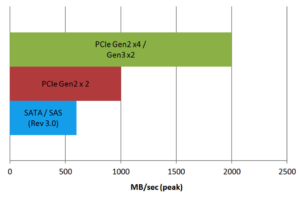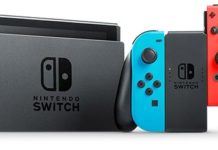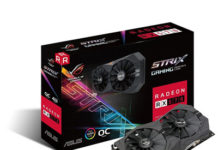How much hard drive storage space should I buy?
A middle ground between storage-per-dollar is recommended. The price of storage is reduced by half every few years. As a result, buying way more storage than you need for the purpose of future-proofing is not a wise investment. Buy as much as you’ll need in the near future. However, sometimes it is a good value to go for the larger size. (i.e. right now a 1TB HDD is $50 and a 2TB is $70; the 2TB option is ~30% more expensive for 100% more storage.
What is RPM? And which is better, 5400 vs. 7200 RPM?
RPM is how many times the disc in the hard drive spins per minute. More means faster reading and writing times. Generally, a 7200 RPM is 33% faster (but there are exceptions), although it may be slightly louder and consume slightly more power. Considering that many tasks on a computer are based on your hard drive’s speed (i.e. transferring files, installing programs, seeking files), I would recommend a 7200 RPM drive over a 5400 RPM. It’s somewhat disappointing to have a machine with a great CPU being held back by a slow hard drive.
Are 10000+ RPM hard drives worth it?
No. They are just too expensive to justify their cost for most people. If cost were not much of an issue, a higher RPM hard drive would be preferable. However, if cost is not much of an issue, just invest in a solid state drive instead.
Does hard drive cache matter? 32MB vs. 64 MB?
Having more cache can improve the speed of a Hard Drive slightly, but I would not spend substantially more money to have a 64 MB cache Hard Drive over a 32 MB one.
Which size hard drive is better: 2.5″ vs. 3.5″?
2.5″ are smaller and consume less power. They generally are used in laptops, but can definitely be used in desktop builds as well. 3.5″ are a little bit better all around for speed, but 2.5″ hard drives are fine for smaller form factor builds.
What are RAID1 and RAID0?
Both are settings which make your operating system exist on two drives instead of one. RAID1 makes both drives mirrors of each other. Both drives have the same exact data. This is used to essentially back up your data. (i.e. if one of your drives fail and the other one is in tact, you don’t lose your data). RAID0 does the opposite. It allows the computer to write different data on both disks. The goal here is to improve read/write speed by using both at once. These configurations are typically used for servers and some performance users.
What are the quietest Hard Drives?
Silent PC Review.com recommends:
5400 RPM: WD Caviar Green, Samsung EcoGreen
7200 RPM: Hitachi Deskstar and WD Caviar Blue
2.5″: WD Scorpio Blue, WD Red
Additionally, you can use Windows settings to set your hard drive to turn off after more than a few minutes of inactivity.
Is a Solid State Drive (SSD) worth it?
Absolutely. It’s the best investment for improving the speed of your computer that you can make They’re also quieter, more energy efficient and much less prone to failure.
PCI-E Storage speed vs. SATA Storage speed?
PCI-E is much faster, although it is used for SSD’s and not Hard Drives because Hard Drives are not fast enough to benefit from the speed increase. If you have an ATX motherboard with PCI-E ports to spare, it may be worth it. However, otherwise a SATA connection is perfectly fine for general use.

Will a SSD improve performance for games?
It will often reduce loading times in half, but that’s it. It won’t help anything involving frame rate, graphics or internet connection. Right now, with SSD space being relatively expensive, it’s not worth it to put your game library on an SSD. However, games with smaller file sizes that PLAY use often and which suffer from long loading times may be worth putting on an SSD.
What are M.2 SSD’s?
M2 SSD’s install straight to the motherboard instead of through SATA cables. M2 SSD’s are smaller in size than 2.5″ drives and allow you to forgo cabling. They also offer the potential to further improve speeds beyond SATA speeds (depending on which M2 SSD’s you use). The downsides: M2’s are a bit more expensive than 2.5″ drive versions and not all motherboards are M2 compatible.
What is NVMe?
NVMe is a type of M.2. SSD which is currently the fastest kind. However, most people will not notice the speed increase at all because PCI-E SSD’s are already very fast (and even typical 2.5″ SSD’s installed via SATA cables will be fast enough for many people).
Does the speed of a SSD really matter?
For practical purposes, an SSD is an SSD. No matter what SSD you choose, the slowest SSD will always be much faster than any hard drive. Down the road, when SSD’s do get to be 1-2 TB in size, faster SSD’s will probably matter more. However, right now and in the near future, you’re probably not dealing with massive quantities of large files on your SSD.
Can a laptop storage drive be used for a desktop?
Yes, if it is a 2.5″ drive. Oftentimes, you can attach them with SATA cables (the larger one to your power supply and the smaller one to your motherboard). Smaller laptops often have the storage soldered in.
How do I give my computer the ability to read SD and/or Micro SD cards?
While it is possible to add a PCI-E expansion card which can read them, it’s easier to just buy a USB card reader. Larger ones tend to allow for both SD and Micro SD (and several cards at once). However, if you just need to read a single Micro SD card, a smaller thumb-drive sized USB adapter will be fine.



